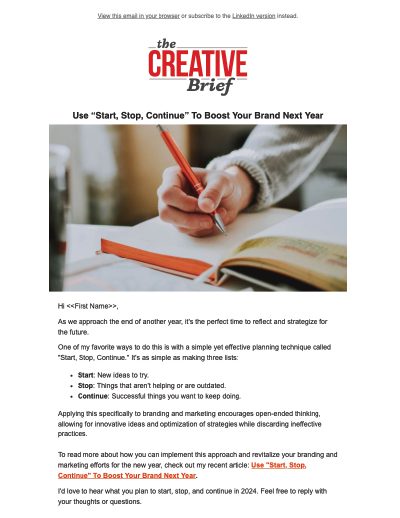Halloween has me thinking about ghosts, zombies, and all kinds of scary things today.
But you want to know what’s really scary?
The day you decide to work for yourself.
No safety net. No steady paycheck. No client pipeline. Just you, your skills, your decisions, your name on every invoice.
Some people jump. Others get pushed.
And being pushed can be even scarier, because going solo wasn’t part of the plan.
I know that feeling well because I’ve done it twice.
The first time I went out on my own, I jumped. The second time, I was pushed. Both times were terrifying, but for entirely different reasons.
The First Jump: Naïve Courage
My first taste of self-employment came early. I was 15, designing T-shirts for a local surf shop and my town’s annual Turkey Trot 5K. The thrill of realizing someone would pay me for my artistic skills was unforgettable.
That sense of independence, of earning from my creativity, stuck with me through design school and into early jobs. I freelanced for a film production studio, a bed-and-breakfast in Maine, and a handful of small businesses that posted on the School of Visual Arts job board.
In 1999, I quit my corporate job and took the leap into full-time self-employment. I didn’t have a plan. I didn’t know how to price my work. I didn’t know what quarterly taxes were or how to build a pipeline. There wasn’t a college class called “How to Be Self-Employed 101.”
So I did what most of us do: I faked it until I made it. And for seven years, I did make it. I learned by doing. I stumbled, guessed, improvised, and built confidence the only way you can: by surviving uncertainty.
At 29, the risk felt manageable. If it didn’t work out, I could always get another job. There was time to recover. The fear was real, but so was the freedom.
The Second Time: No Turning Back
Fast forward a decade. After nearly ten years back in the corporate world, I found myself without a job. This time, I didn’t jump; I was pushed.
And it hit differently. I wasn’t a 29-year-old full of ambition. I was in my mid-40s, married, with a family, and financial responsibilities that didn’t pause just because my employment did.
The fear wasn’t just about failing; it was about what failure would mean. Jobs for people with my level of experience were harder to find. I had to make this work.
But here’s the thing: the second time, I wasn’t starting from scratch. I had years of experience, relationships, and perspective I didn’t have before. I knew that being good at my craft wasn’t enough; I had to treat myself like a client. I had to market me.
And I finally understood that marketing isn’t just networking or posting on social media. It’s about building a repeatable structure, a rhythm, that keeps your business visible and moving forward even when you’re busy or uncertain.
What I’ve Learned from Fear (Twice)
Looking back, each round of self-employment taught me lessons that would’ve eased my fears if I’d known them earlier:
- Fear doesn’t mean you’re not ready. It means you’re stepping into something that matters. Everyone’s scared. Some just move anyway.
- You’ll never have it all figured out. The best entrepreneurs build the plane while they fly it. The learning is the process.
- Treat yourself like a client. You wouldn’t tell your clients to wing it, so don’t do that to yourself. Build systems, processes, and habits that support your future self.
- Your value isn’t your time. It’s the outcome you deliver. When you learn to price based on value, not hours, everything changes.
- You may work by yourself, but you’re not alone. There’s a community of solopreneurs figuring it out alongside you, ready to share ideas, support, and lessons learned.
The Real Scare
The truth is, there’s nothing scarier than never trying at all.
Whether you jump or get pushed, there will be moments of doubt. You’ll question your decision. You’ll stare at the ceiling, wondering if you’ve made a mistake. But somewhere in that mix of fear and freedom is the spark that keeps you moving.
And that’s the real difference between those who talk about going solo and those who actually do it. The ones who move forward anyway — even without the map — eventually find their way.
Because the more you show up, the more the fear turns into focus.
You Don’t Have to Do It Alone
If you’re navigating the ups and downs of self-employment, whether you’re just starting out or reinventing yourself mid-career, you’re not alone. Solo(ish) exists for exactly this reason: to remind you that you can build a business and a life on your own terms, one brave step at a time.
🟡 Subscribe to Solo(ish) on LinkedIn, or sign up for The Creative Brief by email for more real-talk reflections on self-employment, creativity, and sustainable success.




